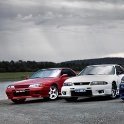Home Tuning Vipec And Link G4 Skyline Plug In Ecus Thread .
Announcements
-
Similar Content
-
Latest Posts
-
Have U ever tried the uniclutch I have heard great things about them and was wondering if anyone had personal experience with them on a 650+awhp car
-
By GoHashiriya · Posted
Speaking with Matt now, seems to be a more cost effective solution to just buy new from Matt - approx 300 EUR - then my local electronics store just told me EUR 100 to solder it in and I guess I'm good to go 600kph. -
Buy a very large syringe and some small bore PVC hose.
-
If the Nistuned ECU is set up to be an RB25DET ECU, then you can put any maps into it you like. You need a programmer to put the actual ECU firmware onto it (the first time, or to change it for another different engine application), not to change maps. As said above - all the Nistune base maps are freely available in the ROM pack.
-
If that is not an optical illusion then they do not look like the same length. The closer one has longer splines. But here's the rub. You say it has an aftermarket mechanical diff in it? Well, when you buy a Nismo LSD you get 2x new stub axles to go with it, because the Nismo mechs are not intended to work with the original unequal length VLSD stubs.
-





![[SKYHI]](http://saufiles.s3.ap-southeast-2.amazonaws.com/monthly_2022_12/DSC00168.thumb.jpg.a90d7ff08652d4dc85ab9b2ff27dade7.jpg)

Recommended Posts
Create an account or sign in to comment
You need to be a member in order to leave a comment
Create an account
Sign up for a new account in our community. It's easy!
Register a new accountSign in
Already have an account? Sign in here.
Sign In Now